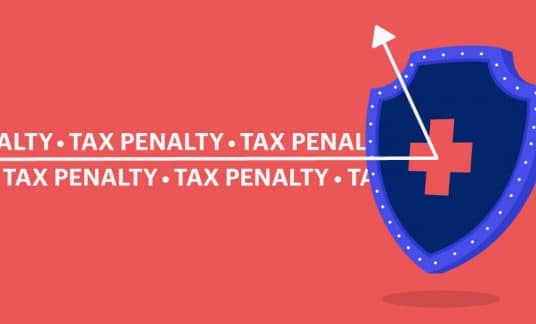Employees are your most valuable assets. If a piece of equipment gets damaged or wears out, you can simply replace it by buying a new one. It isn’t so easy to replace a valuable employee.
Tracking your employee turnover rate is an important metric that indicates the stability and job satisfaction of your employees.
If there’s a problem brewing with your workforce, and you risk losing employees, you need to know about it as soon as possible so you can remedy the situation.
What Is Employee Turnover?
Employee turnover is a measure of the rate at which employees leave a company over a specific time period. This includes those who leave voluntarily, such as resigning or retiring, and those who leave involuntarily, meaning they were fired or laid off.
Why It’s Important to Know Your Turnover Rates
Knowing your employee turnover rate, can help you identify problems and find solutions before they become worse. Employee turnover is costly and can hurt your company’s reputation and culture. It costs 30% to 40% of an employee’s salary to find a replacement, according to the Society for Human Resource Management.
Finding qualified employees in today’s workplace is already difficult. You certainly don’t want to lose your top performers once you have hired and trained them. Tracking your employee turnover rates is a metric worth following to gauge your employees’ job satisfaction.
What Is a Healthy Employee Turnover Rate?
To determine whether you have a healthy or unhealthy turnover rate, compare the rate in your business with the average employee turnover rate for your industry.
The employee turnover rate varies by industry. As an average for all industries, 10% turnover is generally considered a healthy rate. A turnover rate above 18% should be a cause for concern.
Industries notorious for high employee turnover are retailers, with a turnover rate of 65%, and restaurants, with a 73% turnover rate.

How Much Does It Cost to Replace an Employee?
It costs both time and money to recruit new employees.
You have to pay advertising costs for the position or you have to pay a fee to a recruiting agency. Then someone has to screen and interview the candidates, which takes up your time or a supervisor’s time. And after you hire an employee, there is time needed for orientation and training. During this time, there is a loss of productivity until the employee reaches full performance level.
Estimates of the cost to replace an employee range from 30% to 40% of the employee’s salary in direct out-of-pocket costs and loss of productivity.
To put this cost in perspective, suppose you had to replace 10 employees during the year, each earning an average salary of $40,000. At a minimum of 30% recruiting costs of their salary or $12,000 ($40,000 times 30%), it would cost you $120,000 (10 times $12,000) to replace these 10 employees.
How to Calculate Employee Turnover Ratio
Employee turnover rate is calculated for a set period of time, say one year. To calculate the turnover rate, take the number of employees on your rolls at the beginning of the year and at the ending of the year and divide by 2 to get the average number of employees for the year. Then divide the number of employees who left, both voluntarily or involuntarily, by the average number of employees for the year and multiply by 100 to get the percentage.
Take this example: Suppose ABC Corp. had 48 employees at the beginning of the year and 52 employees at the end of the year. During the year, the company had 10 employee separations.
The average number of employees for ABC was 50 (48 plus 52 divided by 2). Therefore, ABC’s employee turnover rate is 20% (10 divided by 50 times 100).
What Does Your Turnover Rate Tell You?
Your turnover rate tells you how satisfied your employees are working with your company. A high turnover rate indicates that you have problems somewhere. On the other hand, a low turnover rate tells you that your employees are happy and probably very productive.
You also can calculate employee turnover rates for specific departments, gender or age. Calculating more specific employee turnover rates helps you to identify any specific problem areas.
Businesses with a low turnover rate have a better reputation and a higher level of employee satisfaction, making it easier to attract and retain highly talented employees.
How to Use Your Employee Turnover Rate
To make your employee turnover rate a useful management tool, you have to categorize your employee separations into voluntary and involuntary. Some employee separations, such as retirement, are unavoidable and don’t necessarily indicate a problem. You’re more concerned about the employees who left your company to go with a competitor and the reasons they left.
Sometimes you have to dig deeper into the numbers to find the problem. Take our example of ABC Corp. The company had 10 employees who left within a year, giving the company a 20% turnover ratio, compared with the industry average 25% turnover. so far, employee turnover appears to be acceptable.
However, further analysis of the number of employees who left indicates that 3 were all in the same department headed by Supervisor Smith. This department only has 6 employees, so the turnover rate for Supervisor Smith was 50%.
Clearly, this is one of those instances where there is a conflict between the employees and their manager. One of the primary reasons that employees leave their jobs is because of dissatisfaction with their boss. This is a situation where the owner has to step in and resolve the conflict between employees and management.

Why Do Employees Leave Their Jobs?
If you’re experiencing a high employee turnover rate, you would like to know the reasons your employees left their jobs so you can fix the problem. CareerAddict conducted a survey and found these factors led employees to quit their jobs.
- Lack of opportunity – Employees like to know their job has a future, and they will be able to grow and develop their skills for better positions
- Low wages and benefits – It’s no secret. A company must offer competitive wages and benefits to attract and retain talented employees.
- No raises – Employees want to feel their work is valued. Pay raises are a way for employers to show appreciation for an employee’s work.
- Poor management – Conflicts between employees and their managers are enough to drive the employees away. Employees need to have a supportive working relationship with their bosses with open communications and feedback.
- Not getting promoted – Employees don’t see the possibility to advance their careers.
- Poor relationships with other employees – The lack of a teamwork spirit can create a toxic workplace. Many employees feel unliked and discriminated against by their coworkers.
- Rigid work schedules – Modern-day lifestyles require more attention to a work-life balance. Employees want more flexibility in their jobs. A rigid work schedule that doesn’t leave an employee time for a personal life will lead them to quit their jobs.
If you are experiencing a high turnover rate, you have to identify the causes so you can start looking for ways to decrease employee turnover
How to Improve Your Turnover Rate
To reduce turnover rate, maintain open communications with your employees. Stay in touch to find out what they are thinking to be able to identify causes of dissatisfaction. A strategy for reducing employee turnover should address the following areas:
Create a Sense of Growth
Show employees how developing their skills and expanding their responsibilities will result in career growth and promotions.
Offer Competitive Compensation
Create a wage and benefits program that is at least equal to or better than your competitors. Include a clear explanation of what an employee can do to earn a raise. If you offer anything less, you are likely to lose employees.
Have an Open-Door Policy
Make it clear that employees are free to discuss with you any personal conflicts with managers or other employees. These types of conflicts often go unaddressed and are allowed to simmer under the surface until the employee walks in your office one day and says “I quit.”
Be Open to Flexible Work Schedules
In today’s work environment, employees are looking for more work-life balance. Make it known that your company has a policy of creating flexible work schedules that allow time for pursuits of personal interest.
Hire People Who Fit Your Company’s Culture
In your interviewing process, visualize a prospective employee who will interact with your managers and coworkers. Hiring isn’t just about looking at a person’s skills and qualifications. It also is about how they will fit into your organization. Make sure you’re clear about what the job entails so the employee knows what to expect.
What is the Difference Between Turnover Rate and Attrition Rate?
The attrition rate used when an employee leaves for more natural reasons or events. It could be for retirement, elimination of the employee’s position, health reasons or the employee passed away.
Quite often, these types of positions aren’t replaced, and the workload is assumed by other employees.
Improving your employee turnover rate is just as important as managing your cash flow and striving to make a profit. Make it one of the metrics that you check every month.










